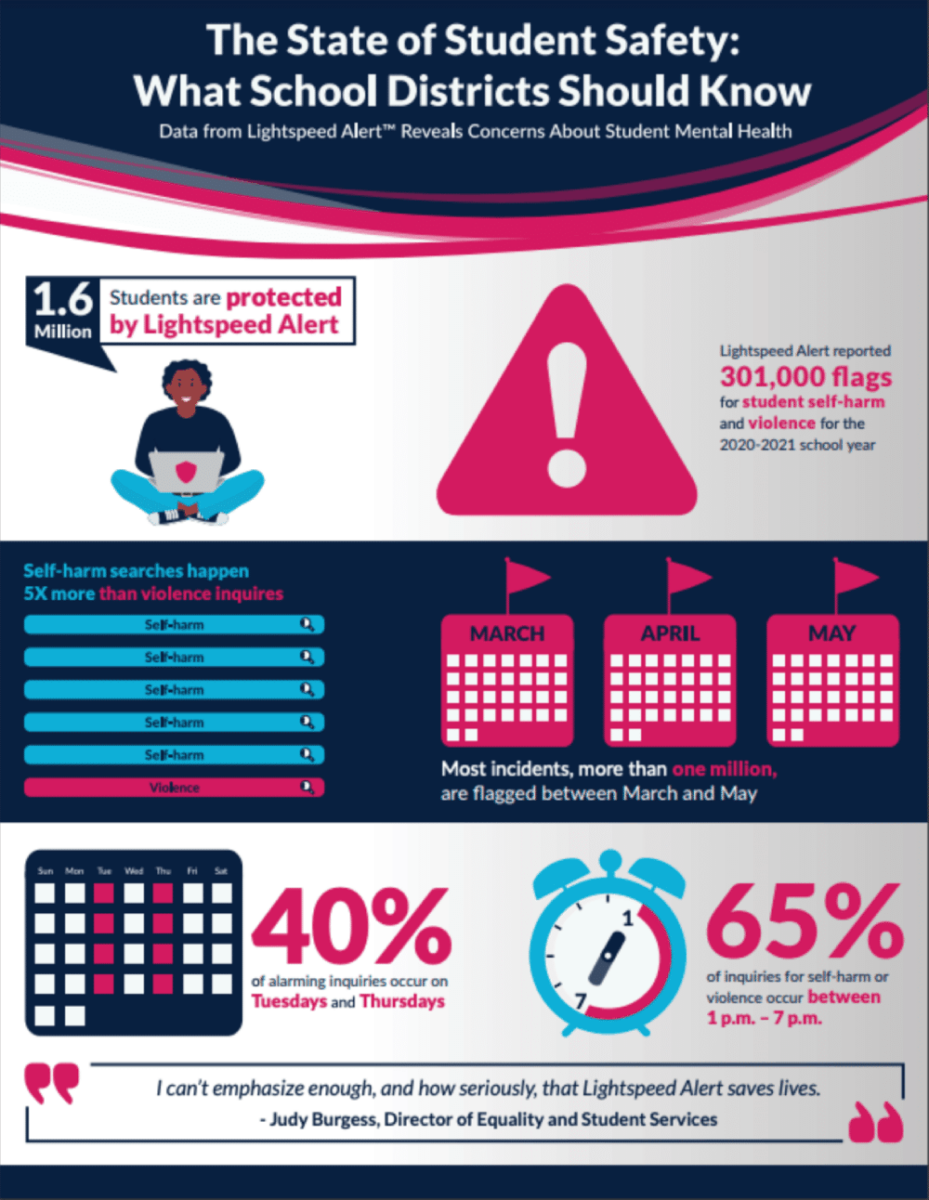More and more American K-12 students are engaging in acts of self-harm and violence. Fortunately, if you work in a school, no matter your role, you’re in a position to help a student that turns to self-harm or violence.
Even though students generally take great pains to hide acts of violence and self-harm, there are some common warning signs you can look out for. When you learn to identify these warning signs of self-harm and violence, you’ll be able to intervene and help a student get the help he or she needs.
Understanding signs of student self-harm and violence
Self-harm takes many forms, including:
- Cutting
- Bruising
- Burning
- Hitting
- Scratching
And motives for self-harm are equally diverse:
- To distract from emotions
- To punish
- To produce physical pain and feel something when experiencing numbness
- To create a form of control when feeling a loss of control
These are just some of the forms and reasons behind student self-harm and violence.
Whatever the form, self-harm is not a cry for help or an attention-seeking behavior. Self-harm should be understood as an attempt to cope with intense emotional distress.
It is an indicator the student is in urgent need of professional care. Indeed, researchers have found that students engaging in self-harm are more likely to attempt suicide than others. In short, children around the world—and those who care for them—are facing a crisis.
In fact, one of our product solutions, Lightspeed Alert™, has noted some concerning trends about the state of student safety and mental health. Including when self-harm searches and inquiries happen in and out of school.

According to the U.S. Centers for Disease Control, as many as 30% of American teenage girls and 10% of American teenage boys engage in self-harm. Worse, though the incidence of self-harm is rising in multiple demographic groups, the prevalence of self-harm is increasing particularly sharply among pre-teen girls. At all ages, in fact, girls are more likely to engage in self-harm than boys, a disparity that has widened in recent years.
It is difficult to get reliable data concerning the percentage of students who commit violence, but we can offer a clear—and troubling—picture of how many American children face violence from their fellow students.
The National Center for Education Statistics reports that in 2017-2018, the most recent year for which we have relevant data, 80% of public schools reported at least one violent incident, leading to an aggregated rate of 29 incidents per 1,000 students. Furthermore, in 2019, 5% of students reported that they feared being attacked while at school, which marked an increase of more than 50% on the previous year.
These injurious acts of harm, whether perpetrated on the self or on other students, reflect mental health problems that mental health professionals can help treat.
Unfortunately, many of the students most in need of professional care fail to seek it out and often actively avoid help when it is offered. Some fail to get help due to a sense of shame, the stigma attached to seeking mental health care, or are unaware that help is available.
Regardless of the reason, the solution is the same: you need to monitor students for warning signs of self-harm and, when necessary, intervene swiftly.
Spotting signs of student self-harm & violence
Because incidents of self-harm and violence are external manifestations of internal emotional upset, the most important signs to look out for in students involve a dramatic change of mood: increased irritability, mood swings, intense sadness, some combination of these, and other emotional changes.
If a student demonstrates a noticeable and lasting change in emotional affect, you should keep an eye on them to see if there are signs of physical injury: burns, fresh cuts, scarring, scratches, bruises. However, most students will work very hard to hide evidence of self-harm.
You must also look for less direct warning signs of self-harm, such as:
- Wearing long-sleeves or long pants in hot weather
Regular nervous scratching and picking - Withdrawing socially to the point of isolation
- Keeps sharp objects or lighters on hand
- Expressing a sense of worthlessness or despair
- Unexplained cuts, scratches, bruises, or other wounds, often on the wrists, arms, thighs, or torso, which they explain as the result of accidents
- Blood stains on bedding, clothing, towels, or tissues
- Avoiding situations in which they need to reveal skin, such as swimming or changing in a locker room
While none of these behaviors by themselves indicate that a student has a problem, they do indicate that the student may be at sufficiently high risk to merit an intervention.
The warning signs that often precede acts of violence are similar to the signs of self-harm. Most students who commit violence have demonstrated a pattern of hostile, threatening behavior toward others, either staff or students.
However, there are less overt signs you can look for as well:
- Physical fights with friends or family
- Destruction of property
- Swift rage for seemingly trivial reasons
- Any of the other self-harming behaviors
Any or all of these behaviors may be present in a student about to hurt a member of your community. If you fear that a student may be in danger or pose a danger to others, don’t wait until you’re certain: act immediately, before it’s too late.
How to intervene
The first thing to do, whenever possible, is to reach out to the student. Ask them how they’re doing and give them a chance to talk. Tell them that you’re ready to listen, without judgment, to whatever they may want to say. Sometimes, troubled students are eager to have someone to talk to.
It is also necessary to consult with professional mental health services available to you. Talk to nurses, social workers, counselors, and others at the school about what you’ve seen and ask them what they advise you to do.
And unless there are very good reasons not to, you will need to talk to the parents too. Sometimes families will not be aware of the problem. This is especially likely if the parents have separated, and the child divides their time between different homes.
Don’t feel like you have to figure out everything on your own: there are many resources ready to make it easier for you to help students. When teachers, administrators, and mental health professionals work in concert, engaging in patient, respectful dialogues with students and (when possible) parents, the child can begin to experience school as the safe, supportive environment he or she needs it to be in order to thrive.
Benefits of intervention
The most important—and most immediate—reason to monitor your students for warning signs is clear: you may save a student’s life. But if your school works hard to find these signs and get students the help they need, you may also reap some surprising benefits.
First, the more you talk about mental health problems, the less stigmatized they become, which makes it easier for other students to get the help they need.
Second, the more students in need get help, the more students around them will feel safe and comfortable themselves, freeing them from the stress that may be taking its toll on them.
And finally, the better-equipped teachers and staff are to identify and address these warning signs, the less often they will find themselves in stressful situations where they know a student may be in need but don’t know how to help.
Fortunately, monitoring tools like Lightspeed Alert reduce the burden on schools by tracking students’ online behavior. By picking up on warning signs that would otherwise go undetected, these solutions and the safety experts behind them keep communities safer 24x7x365. To make sure your district has the tools it needs to address the mental health crisis your students face, talk to a Lightspeed Professional today.
Want to learn more about Lightspeed Alert?
Schedule a demo or get a quote today.

